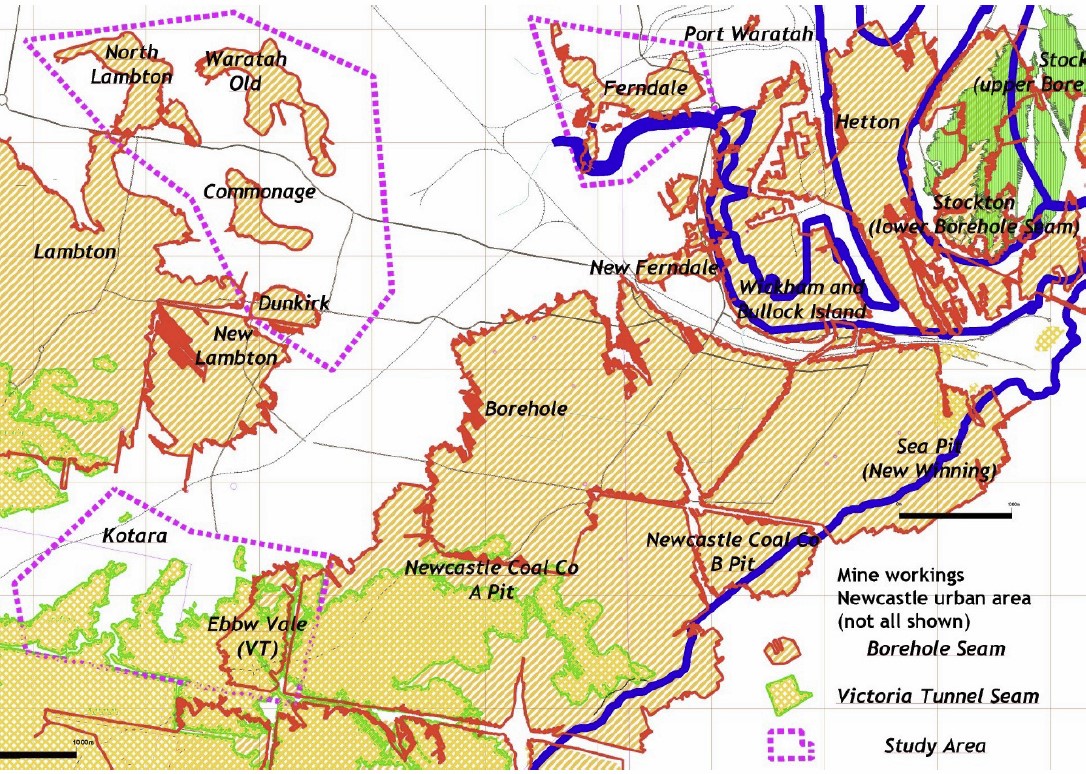Centre for Geotechnical Science and Engineering

Mine Subsidence and Groundwater Anamolies in Old, Abandoned, Shallow Workings
Key Researchers: Stephen Fityus
PROBLEM DESCRIPTION
Newcastle NSW, and many of its surrounding districts have a legacy of abandoned coal mines which cause damage to existing infrastructure and which place significant constraint on new development. In many cases the mines are more than 100 years old, the depth of mining is between 5 and 20m, and the quality of historical records is poor. Despite a long history of managing the aftermath of mining in Newcastle, there is surprisingly little collated data on mine subsidence phenomena and our understanding of the past, present and future mechanisms of subsidence that need to be engineered for. In collaboration with Subsidence Advisory NSW, this research is seeking to elucidate correlations between the many factors that control the likelihood and style of subsidence that is commonly experienced throughout the region, so that the risks posed can be better understood. Using the NEWSYD geotechnical facility, the CPT has been deployed as an unlikely tool to study the ground conditions in areas of shallow mining under alluvium, giving insight into the mechanisms by which subsidence has occurred.
SCIENTIFIC AND ENGINEERING APPROACHES
- Identification of trends in data extracted from records of past subsidence events capturing critical factors such as seam, depth, worked section, bord width, roof strata etc
- Site specific studies of deformed ground surface conditions, by ground survey, lidar and aerial imagery
- Site specific studies of ground conditions using CPTu where shallow workings are overlain by alluvium
- Direct correlation of CPT and borehole data on subsidence-affected sites
- Repeated CPT testing at sites, before and after grouting
APPLICATIONS
- Interpretation of surface subsidence expressions
- Characterisation of future subsidence risk
- Evaluation of the outcomes of site grouting
- Mitigation of groundwater anomalies


The University of Newcastle acknowledges the traditional custodians of the lands within our footprint areas: Awabakal, Darkinjung, Biripai, Worimi, Wonnarua, and Eora Nations. We also pay respect to the wisdom of our Elders past and present.
